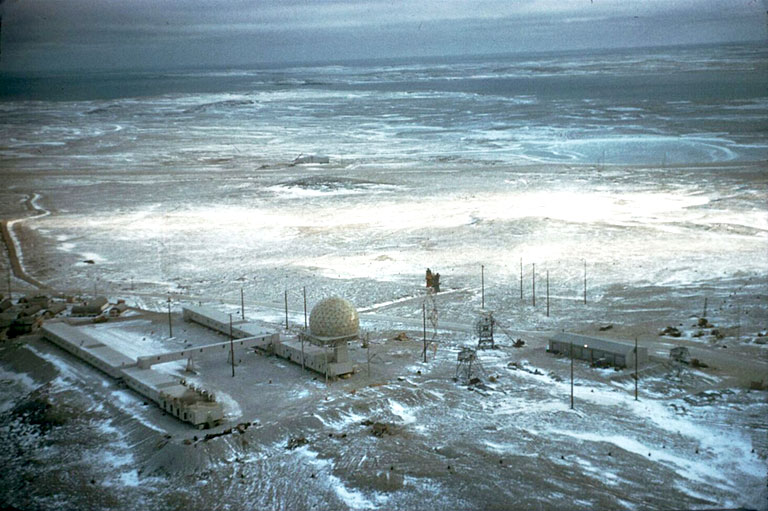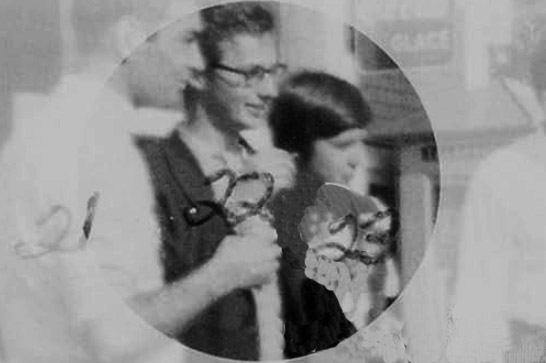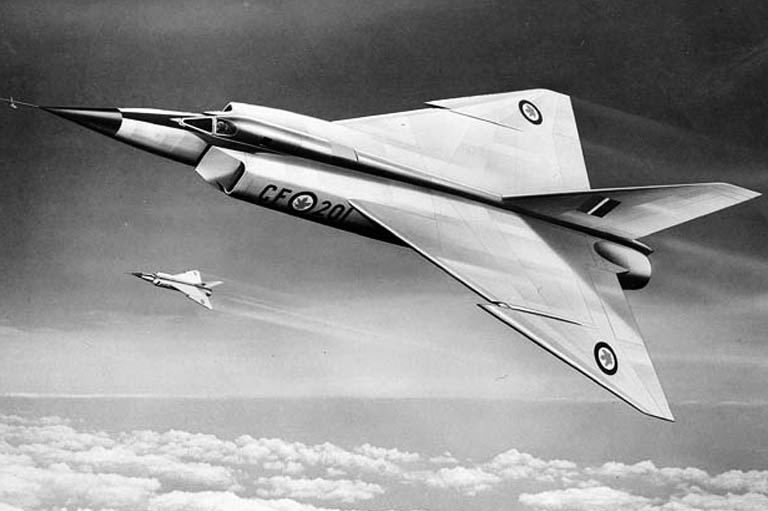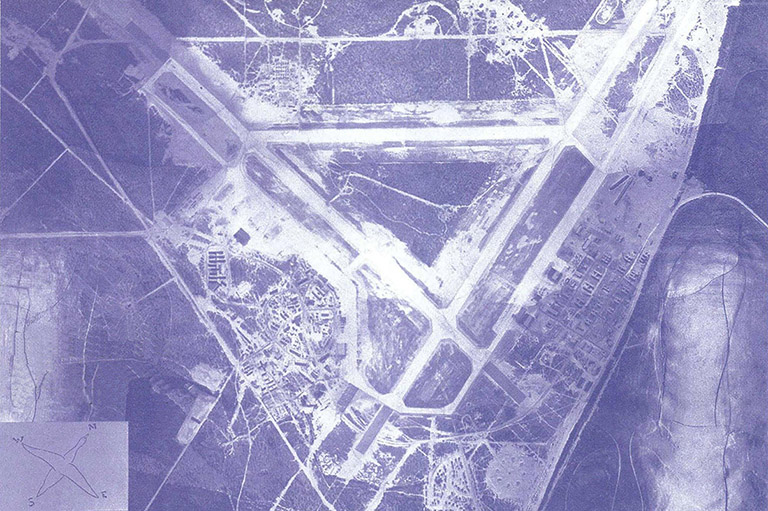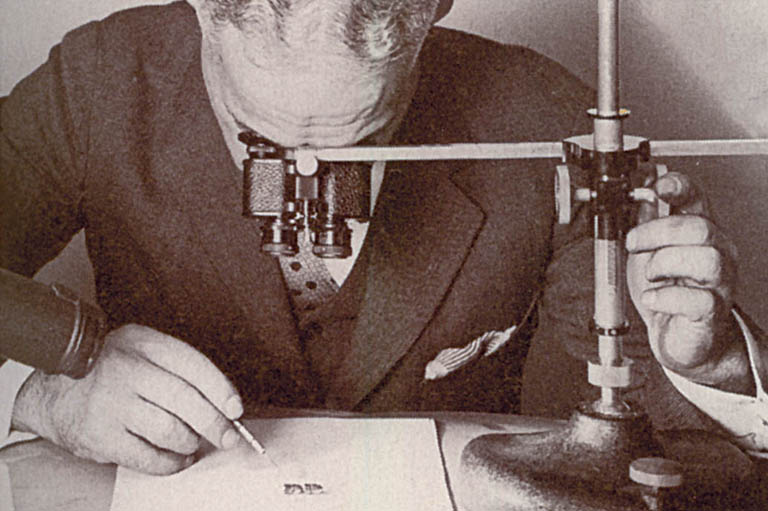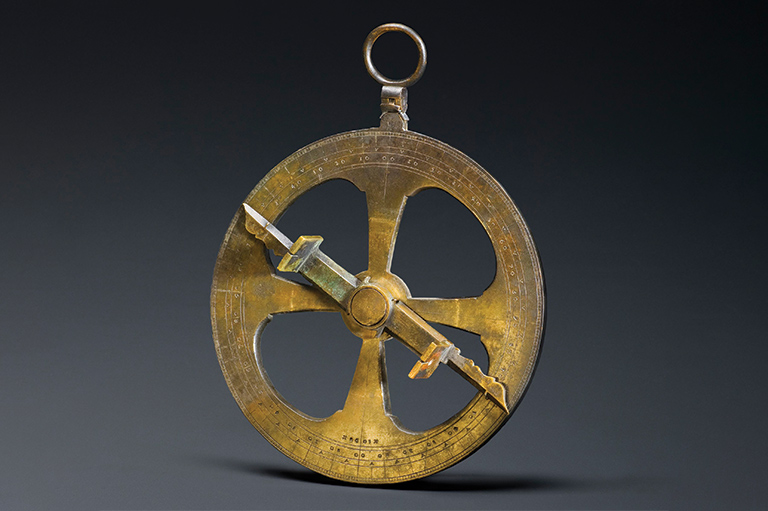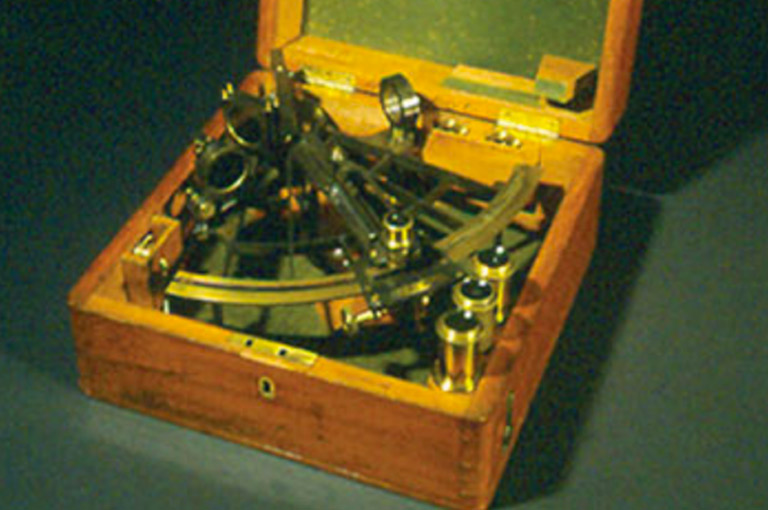Cold War Computing
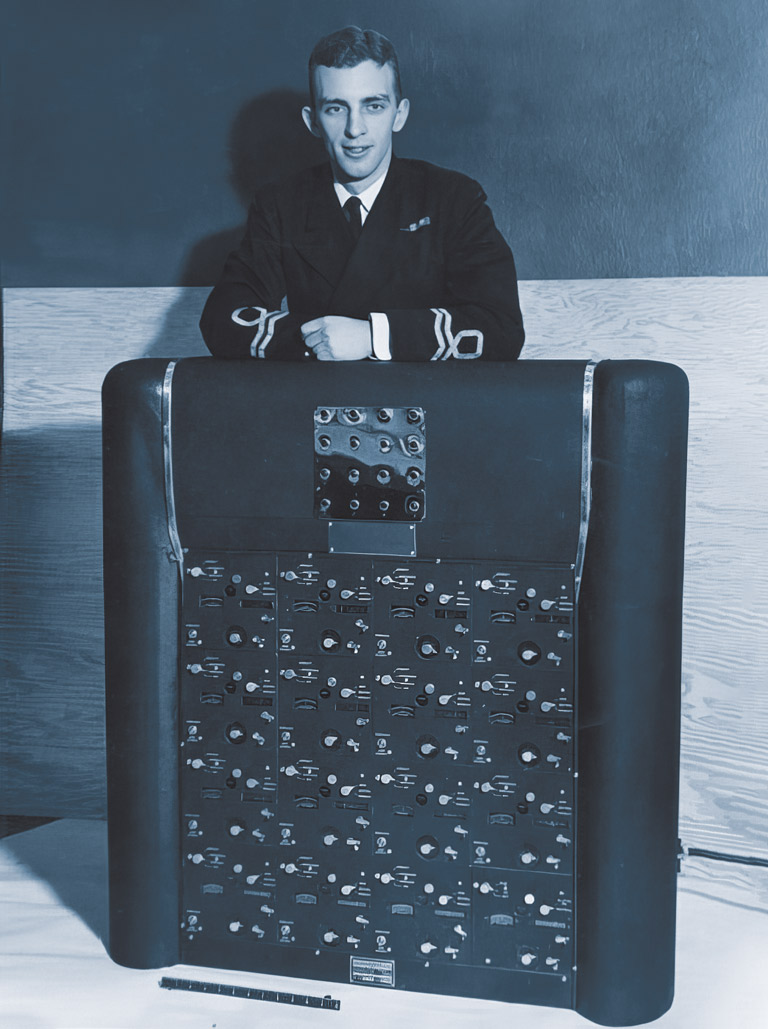
Residents along the shore of Lake Ontario had been accustomed to the sight of warships since the mid-eighteenth century. During the Seven Years’ War from 1756 to 1763, a few British and French vessels manoeuvred and fought on the waters of the lake — although, as one historian later commented, with more manoeuvring involved than actual fighting. In the post-Second World War era, the military presence consisted of routine Royal Canadian Navy (RCN) training exercises, which occasionally involved dropping depth charges, as well as publicity appearances during shows and exhibitions.
Imagine, then, uncovering top-secret records of a convoy of warships prowling the lake, vessels equipped with computers that communicated over a wireless digital network at a time when no such networks existed anywhere else in the world. Imagine this happening in an era when the very few computers in existence were too large and too fragile to be moved around — not to mention their utter unsuitability for operation on ships battered by waves.
But in 1953 just such a convoy packed with state-of-the-art Canadian-made computing equipment did sail the waters of Lake Ontario in a top-secret demonstration of a computerized system called DATAR (Digital Automatic Tracking and Remoting). The system was the brainchild of RCN Lieutenant (later Commander) James Louis Belyea, who designed DATAR to aid naval command during complex warfare situations. A collection of documents recently donated to the York University Computer Museum in Toronto reveals that DATAR was one of the most innovative, daring, and yet least-known ventures in the budding Canadian digital electronics industry of the early 1950s.
As the curator of the York University Computer Museum, I have archived, researched, and written about several significant collections donated to the museum over the years. They typically comprised corporate and technical documents mixed with all kinds of promotional material. Only rarely did a human dimension emerge from the accumulated records of corporate achievements and technological breakthroughs. But the DATAR archive is different. What sets it apart from other collections is not so much its sheer volume of information but the wealth of detailed personal accounts of DATAR’s development that Belyea left in handwritten recollections, technical notes, letters, and records of visits, meetings, and other events. These documents reveal that DATAR was not conceived in a eureka moment but in a gradual process arising out of operational problems in anti-submarine warfare that Belyea identified while serving as group radar officer for the Western Atlantic Escort Group in the last years of the Second World War.
With 7 uniquely curated newsletters to choose from, we have something for everyone.
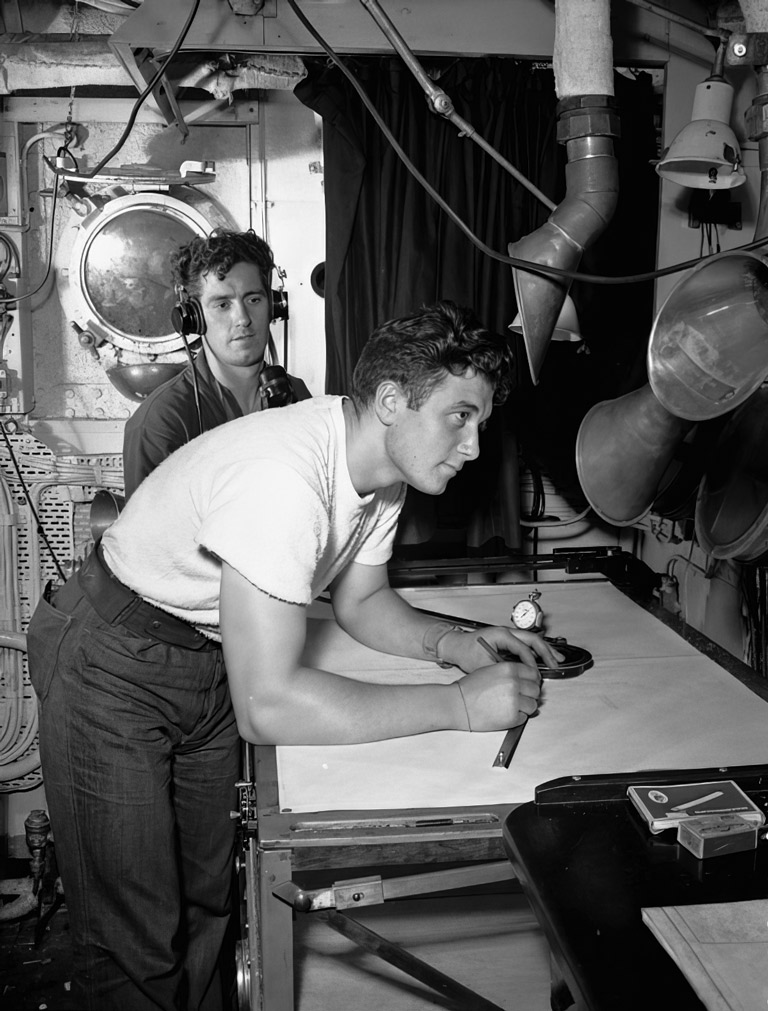
During the Battle of the Atlantic, the German submarine fleet launched devastating attacks against the overseas shipping upon which Britain entirely depended for survival. To minimize the damage from these attacks, Allied ships were organized into convoys under the protection of warships and aircraft. Information about U-boats gathered by convoy radar and sonar operators was forwarded verbally to the action information centres on battleships, where such information was used to manually update battlespace maps or plots. These maps, in turn, were used by the command to analyze the combat situation and to issue appropriate orders. Inter-ship radio and flag signals were also used to coordinate defence efforts within a convoy by sharing intelligence and relaying commands. The inherently slow and unreliable human links involved in this process made the mounting of an effective defence against submarines immensely difficult, and the convoys suffered big losses at the hands of U-boat wolf packs.
This was when Belyea began to realize that during future conflicts the anti-submarine convoy escorts would face enemy targets of much greater concentration, speed, and capabilities. The sheer complexity of gathering accurate data about such targets, and of sorting and presenting such data in immediately comprehensible form, would render the methods at hand completely inadequate for effective coordination of convoy defence. The human operators in action information centres would be unable to continuously and rapidly supply the command with a sufficiently complete picture of the battlefield. He concluded in one of his reports that “a new approach appears to be needed on this rather serious problem.”
But it was not until Belyea was transferred from convoy escort duty to radar sea training officer on HMCS Somers Isles in Bermuda that his ideas for what would eventually mature into the DATAR concept began to germinate. To be effective, action information centres would require support from a novel semi-automatic data gathering, processing, presentation, and sharing system based on principles and technologies that were yet to be researched and developed. As he later explained in one of his 1950 reports, “Such a system should enhance the powers of an intelligent and an aggressive command (both group and individual commands) and should provide an effective tactical tool for close cooperation, quick understanding and instant action in joint tactics, surpassing by a large factor the present AIC [action information centre] facilities.”
Belyea also realized that, with the new solutions adopted, the training of naval officers would require advanced automated battle-training devices — which today we would call computer-assisted battle simulators. Finding and implementing effective solutions to these problems would define most of his career in the RCN.
Advertisement
After the war, Belyea moved to Naval Service Headquarters in Ottawa and began promoting his ideas. In one of his 1945 reports he stressed “the need for improved radar display techniques employing automatic tracking of targets from continuously scanning radars, means for automatic plotting of such targets, remoting in filtered fashion to user positions, automatic servoing of gunnery directors onto targets [in other words, automatically directing guns onto targets using servo motors], and automatic radio links to display such tracked targets in other ships.” While this blueprint for DATAR was not an instant hit among the naval decision makers, his proposal for automated battle trainers was quickly approved. All things considered, this proved to be fortunate, because both DATAR and the trainers were to be based on similar solutions. Hence, when design of the trainers commenced, there was some hope that early work on DATAR could start alongside it.
Once Belyea’s electronics laboratory at Naval Service Headquarters was established and a small staff of engineers and technicians had been assembled, it was time to concentrate on technical solutions. Over the next months he visited American and British computing and electrical engineering centres, gathering information and expanding his engineering expertise into new domains. (He already held a degree in electrical engineering from the University of New Brunswick.)
Belyea met with leading engineers, scientists, and computer pioneers including Alan Turing (a British mathematician best known for his outstanding contributions to cryptography during the Second World War and for his seminal work on the mathematics of computing and artificial intelligence); John von Neumann (a Hungarian immigrant to the United States and one of the most influential mathematicians, physicists, and computer pioneers); Jay Forrester (an American electrical engineering professor at the Massachusetts Institute of Technology); and Sir Frederic Williams (a British professor at the University of Manchester recognized for his work on the world’s first electronic stored-program digital computer — the Manchester Baby — and on early computer memory devices). Belyea filled notebook after notebook with extensive notes and comments, technical assessments, and design sketches.
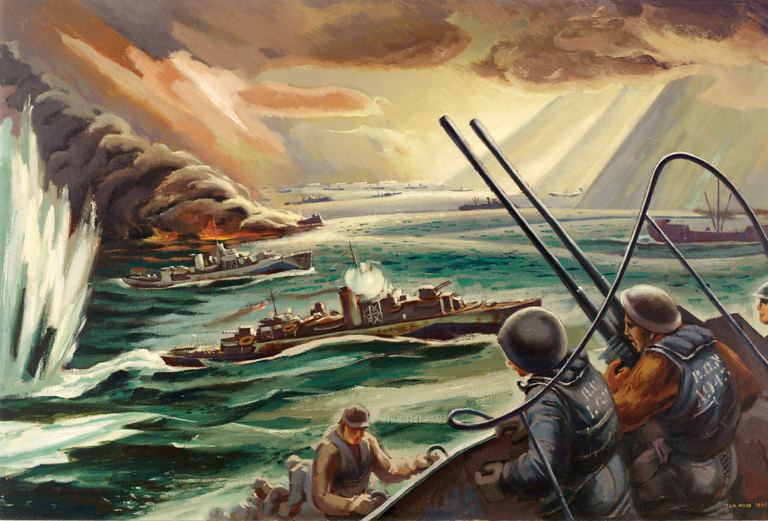
However, despite his persistence and organizational efforts (which, as he admitted, made him as many enemies as friends), not everything was going smoothly. DATAR was not gaining any traction, and staff members were leaving his lab for more challenging jobs. In his letter to W.H.G. Roger, RCN electrical engineer-in-chief, Belyea wrote: “I steadfastly insist that this country can equal or surpass any other nation in any chosen specialization of a scientific or engineering nature, if it seriously attempts to do so, and that this Navy and this branch should occasionally prove this point for the benefit of local morale. In the electrical engineering field, I find abundant room for revolutionary advances over the next half-century, and a measure of tactical superiority for the armed forces which are most alert to promote and employ such advances.”
By early 1948, Belyea had progressed far enough in his thinking and design to, yet again, seek support for DATAR. “In brief,” Belyea wrote, “DATAR would function basically as an automatic data exchange, receiving information both from local sources in [the users’] own ship and from remote sources in companion ships and aircraft, interweaving, refining, classifying, storing all the data, and distributing the intelligence to users in [their] own ship and compiling [their] own ship’s addenda into the users’ knowledge in remote ships. Deep in the philosophy of DATAR are the ideas that time must be saved wherever possible and that the information presented to all the users must be plain, clear, to the point, and complete.... In keeping with this philosophy, DATAR should be as automatic as possible within the safety of decision margins and consistent with ease of understanding and maintenance.” For the first time, he placed the nascent digital technologies at the centre of his system’s philosophy and structure. “It is now definite that digital data transmission is an essential part of the proposed DATAR system, that digital storage is the key to further advancement of the programme, and that schemes of digital data processing and display are showing decided promise.”
He argued that, in comparison with the analog solutions employed in RCN equipment, digital techniques held the promise of flexibility, reliability, performance, miniaturization, and ease of maintenance. He emphasized that the digital computer offered unmatched capabilities by directly working with digital data, automatically acquiring it, then processing it and sharing it with other networked computers. In short, a DATAR system would offer a reliable high-performance system for the automatic and real-time gathering, processing, displaying, and sharing of combat information using digital computers communicating over a digital radio link.
Belyea also realized that DATAR-like systems could be used in other military and civilian applications, including traffic control for aircraft and ships, as these operations became increasingly complex and subject to electronic surveillance. Nothing quite like this had ever been proposed before.
Save as much as 40% off the cover price! 4 issues per year as low as $29.95. Available in print and digital. Tariff-exempt!
With today’s technology, one would simply build a DATAR system around ruggedized computers designed to operate reliably at sea or in other harsh environments. The computers would communicate with each other over a secure wireless network to collect, analyze, and display information about enemy targets. However, in the late 1940s there were no digital computers in Canada and no computer networks anywhere in the world. The work on ARPANET — the Internet’s precursor — was initiated only in the mid-1960s.
To make the situation even more challenging, neither RCN nor any Canadian company had the expertise in digital electronics or the manufacturing competence to handle projects of that complexity. Therefore, to build the battle trainers and DATAR, Belyea needed Canadian industrial partners willing to create digital electronics research divisions capable of undertaking work on novel digital computing, storage, transmission, and display technologies and equipment. In the end he played a pivotal role in establishing both Canada’s first computer company, Computing Devices of Canada in Ottawa, and an electronic research division at Ferranti Electric Canada in Toronto, arranging start-up contracts for both of these firms.
But it was not until 1950 that the DATAR project finally advanced from the memo-writing and conceptualization stage into the design-and-implementation phase. Early that year, the RCN electronics lab demonstrated the merits of digital technology to Minister of National Defence Brooke Claxton and several officials from the Department of National Defence.
During the demonstration, a simulated naval battlefield consisting of various moving targets — naval vessels and aircraft — was generated by digital equipment at the Ferranti plant in Toronto. The information about these targets, such as their types, positions, speeds, and directions, was automatically and continuously transmitted to the electronics lab in Ottawa over a unique digital radio link. The officials observing the demonstration in Ottawa could view the targets’ movements on a prototype display developed by Computing Devices of Canada. Although the demonstration could not yet fully illustrate the operational potential of DATAR, “it has proved sufficient to excite the enthusiasm of operational and technical experts” at the presentation, Belyea wrote in his January 28, 1950, report, “DATAR: A New Canadian Development.”
Soon after, the DATAR project was approved, taken under the Defence Research Board’s umbrella, and fully funded. In a February 11, 1950, letter signed by W.H.G. Roger, Belyea was told: “With reference to the recent display and presentation of the ‘Datar’ development to date, it is most gratifying to be able to advise you that the Naval Board has commended you for your work in this connection, and has instructed that a note of this commendation is placed in your file.”
By mid-1953, an experimental DATAR system was ready for the Lake Ontario trials. In August of that year, two RCN Bangor-class minesweepers, HMCS Granby and HMCS Digby, took part in the Canadian National Exhibition (CNE) in Toronto. The ships were anchored off the lakefront at a distance that offered their unobstructed visibility to thousands of spectators who gathered each night to watch a light show. The ships remained blacked out until a signal was given and the ships cut loose a firework display that silhouetted them as they rode at anchor. As it was later reported, “operational commitments” prevented the sweepers from taking part in the show beyond the first two nights of the exhibition. These commitments turned out to be preparations for a top-secret demonstration of one of the most significant Canadian high technologies in postwar history.
Under the cover of the CNE, the Granby and the Digby were to be outfitted with prototype DATAR equipment and made ready for demonstrations of a three-ship convoy escort on the lookout for submarines. The third “ship” in the convoy was simulated by a shore station located in a former radar test site that had been converted into the DATAR development laboratory on the Scarborough Bluffs overlooking the lake. At the heart of the trial DATAR system were three special-purpose digital computers built and installed on the ships by Ferranti. Canadian, American, and British naval officers observing the demonstration from the onshore DATAR station were impressed with the system’s performance and potential. In the words of Arthur Porter, who in the 1950s was the director of research at Ferranti’s electronics division, DATAR was “the most advanced system of its kind in the world.”
In the end, the British and U.S. navies did not adopt the DATAR computerized battlefield information system for their operations as the RCN had hoped, instead developing their own systems. A secret RCN report from September 1956, now declassified and stored at Library and Archives Canada, confirms that, three years after the DATAR demonstration, the U.S. Navy (USN) was in the process of developing a “Naval Tactical Data System” (NTDS), described in the report as “a digital automatic data processing system extremely like the RCN DATAR project in general concept.” The document also noted that “the information on DATAR, provided to the USN … has had a great deal of influence in the conception of the NTDS program.”
By 1959, the prospects of a full implementation of DATAR looked grim. Stanley F. Knights, who in 1952 was placed by Belyea in charge of DATAR’s future developments, noted in a May 1959 confidential report that “present Canadian Government policies being what they are, it does not look bright for a home-grown version of a data processing system for the RCN; and if such equipment ever reaches the RCN the general feeling is that it will be of American design and manufacture.” By the end of the 1950s, the work on the full-scale DATAR system was terminated. Belyea found himself back at sea, heading for promotion. The original DATAR equipment was most likely cannibalized for other RCN electronics projects. It survived only in a few photographs.
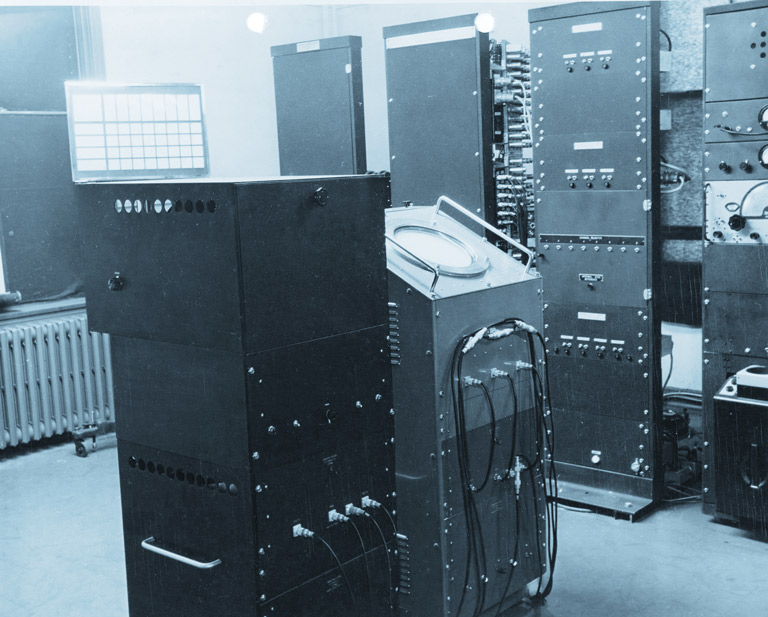
What, then, is DATAR’s historical significance and influence? It comes down to four principal achievements. First, the project offered a new computing paradigm. Instead of a single computer crunching numbers to obtain a solution, several networked computers could solve the problem by sharing information and resources. It brought computers out of basements to solve problems in highly dynamic mobile environments. If computers could operate on ships, then one day they could find their way even into airplanes, making flights safer.
Second, the project had much to offer in terms of the novel digital solutions it employed, starting with its wireless computer network and specialized displays. According to Belyea, although the U.S. and British navies did not adopt the DATAR system, the 1953 DATAR trial provided the impetus for their development of large-scale computerized control systems.
Third, DATAR led to the creation of the first Canadian computer companies and of electronics research centres within other Canadian firms. Ferranti turned the digital expertise it gained during the project into some of the computing world’s first achievements. In 1956, the company developed a computerized mail-sorting system for Canada Post. Two years later, it installed its computerized cheque-sorting system at New York’s Federal Reserve Bank. In 1961 the company built the world’s first computerized airline reservation system, ResrVec, for Trans-Canada Air Lines, and in 1962 it offered the first Canadian-designed and commercially sold general-purpose computer — the FP6000. Finally, the DATAR project spawned the country’s first generation of digital electronics engineers.
In retrospect, the 1950s were an astonishingly fertile period in computing research and development around the world, and DATAR exemplified these rapid advancements in Canada. Why is it, then, that Belyea’s invention is still so little known? To answer this question, one has to recall that the 1950s were also a period of extreme geopolitical tensions caused by the Cold War that began soon after the end of the Second World War. This situation forced the RCN to classify most of its projects for naval applications, including DATAR, as secret or confidential. As a result, no information about them reached the general public.

According to a statement from the Royal Canadian Navy public affairs office, “The RCN is unaware of any documents relating to DATAR being destroyed.” It is therefore intriguing that, out of hundreds of DATAR-related documents produced by or for the RCN, only a dozen files have been deposited at Library and Archives Canada, where the files from the 1950s are held. In Belyea’s view, after DATAR was discontinued, the records were sealed for several years and ultimately destroyed, “except for the odd stray copy in possession of those most intimately involved and which could not be shared or released in publication until the classification was lifted — if ever.” He disclosed that, “from my habit of working nights and weekends away from the office, and accordingly, having a locked trunk at home, I was left with some classified reference material which I mostly destroyed but retained some nostalgic examples until after the classification expired.” What was left was donated to the York University Computer Museum by the Belyea estate.
At least Belyea’s collection of documents — together with the declassified DATAR documents at Library and Archives Canada — offers a glimpse into the creation and development of DATAR. It paints a portrait of a Canadian pioneer of digital technology; of the originator, delineator, and propeller of one of Canada’s most significant technological achievements; of DATAR’s virgin digital technology, its developmental hurdles, its funding struggles, and its ultimate proof of merit.
Belyea retired from the RCN in 1974. He spent his last service years in the National Defence Headquarters as the design authority overseeing training simulators for the three armed services. “As a naval officer Jim was required to spend time at sea,” recalled Belyea’s son, Eric Belyea. “While I know that he enjoyed his sea time, his heart was in the engineering work that today would likely be classified as a cross between computer science and gaming tech.... His work might be seen as a precursor to many of the combat and strategy games popular with computer gamers.”
Lieutenant Commander James Belyea died in Victoria in November 2013.
We hope you’ll help us continue to share fascinating stories about Canada’s past by making a donation to Canada’s History Society today.
We highlight our nation’s diverse past by telling stories that illuminate the people, places, and events that unite us as Canadians, and by making those stories accessible to everyone through our free online content.
We are a registered charity that depends on contributions from readers like you to share inspiring and informative stories with students and citizens of all ages — award-winning stories written by Canada’s top historians, authors, journalists, and history enthusiasts.
Any amount helps, or better yet, start a monthly donation today. Your support makes all the difference. Thank you!
Themes associated with this article
Advertisement

